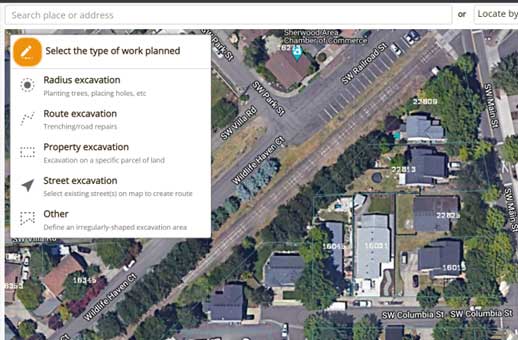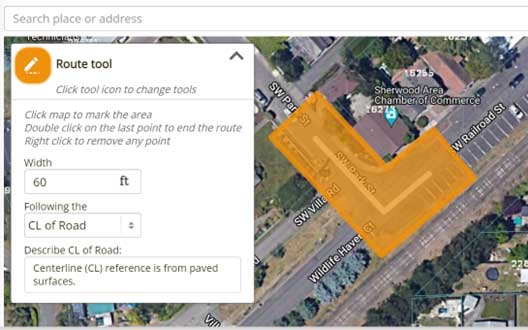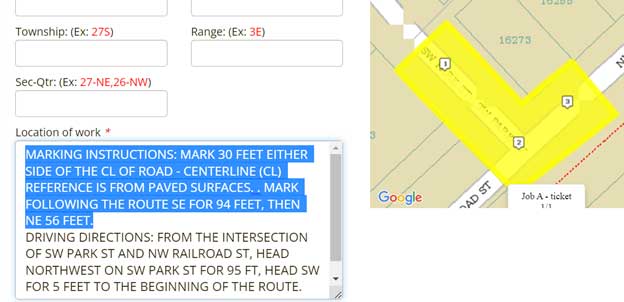By Nathan Taylor, CSP, ASP, CHST, AGC Safety Management Consultant
Using the 811/One-Call Center and requesting locating and marking services is the first step many contractors take in order to avoid damage to underground facilities. But a lot has changed in the last few years regarding the technology available for contractors. Although it is still called the “One Call Center” and we are all used to the phrase Call 811 before you dig, most people are no longer using their phones to get some paint put on the ground. The Oregon Utility Notification Center (OUNC) recently updated the locate request system that encourages more notifications to be made online with tools to identify the location as required by rule. The tools also meet the Common Ground Alliance (CGA) best practice, 5.2 Whitelining electronically that was approved by committee on 12/13/17 (see below).
Electronic white lining when available provides an alternative method where excavators may indicate their defined dig area visually by electronic data entry (lines or polygons) without the need for a physical site visit. The technology allows the excavator to identify for the locate technician a clear delineation of their proposed excavation area. Premarking allows the excavators to accurately communicate to the one call center, facility owners/operators, or their locator where excavation is to occur.
The OUNC provides a demonstration application of ITICnxt (sandbox) on their website so users can become more familiar with electronic white lining tools. When you click for a drawing tool, you are presented five tools to identity the location of proposed excavation (see below). All stakeholders receive a benefit in-kind when the request defines the excavation site as specifically as possible.
The new locate request system populates a location of work description for you based the tool you use. For example, using the Route tool and specifying a width of “60 ft” and entering a custom response of “CL of Road”, then adding a description “Centerline (CL) reference is from paved services.” To complete the electronic whiteline click on the map the route of excavation and double click on the end point.
The locate request system will automatically populate marking instructions and identify cross streets on driving directions for utility locators to find your location of work (see below).
In short, getting utilities located is a whole lot easier than it used to be! You can still call 811 if you want, but with some of the newer tech tools available, there are a lot of options! The Oregon 811/One Call Center offers training, contact, and help information with live chats, helpline, step by step manuals, and short instructional videos. Be sure to check out their website for additional information and resources!


